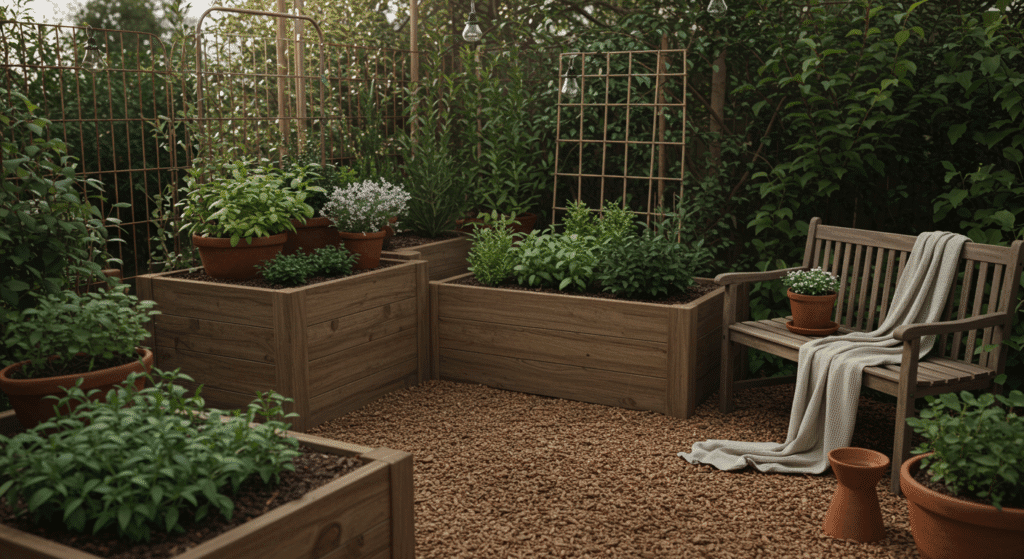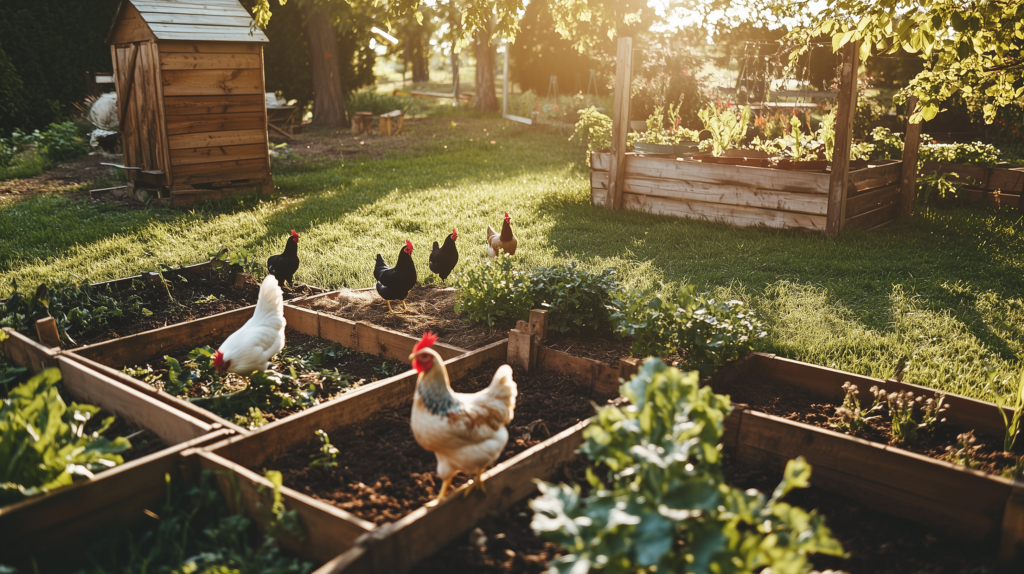This post may contain affiliate links, including those from Amazon Associates. If you make a purchase through these links, I may earn a commission at no additional cost to you. Learn more about our affiliate policy.
When I first embarked on my urban homesteading journey, I imagined tranquil mornings picking fresh tomatoes, tending a perfectly orderly garden, and enjoying eggs from cheerful backyard chickens.
And while some of those dreams eventually became reality, I also faced unexpected challenges that made me question my patience and occasionally my sanity.
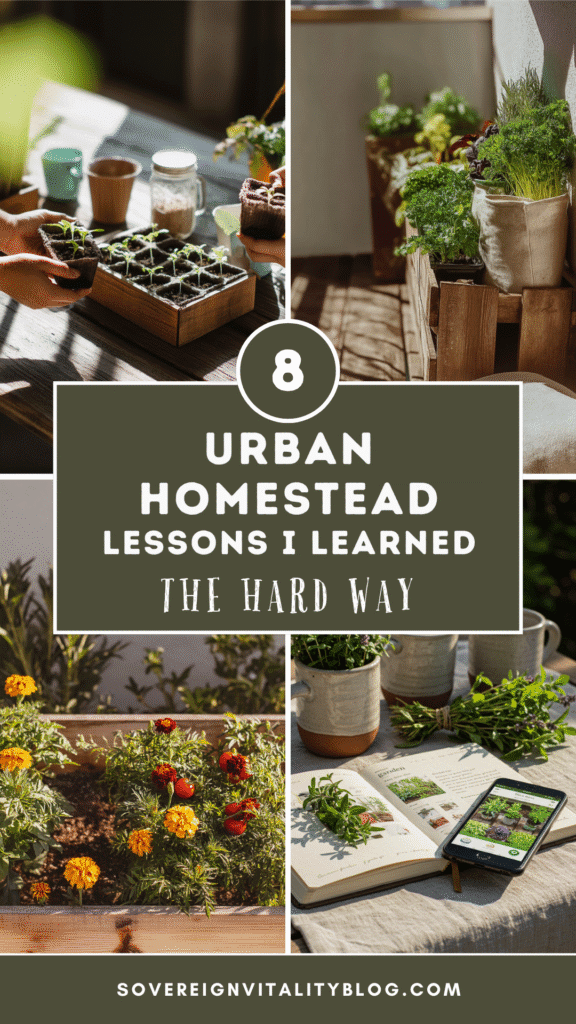
Today, I want to share with you eight key lessons I learned the hard way about urban homesteading.
I hope my experiences save you from some of the frustrations I faced and empower you to confidently navigate your homesteading journey, even when space, rules, or expectations threaten to hold you back.
Lesson 1: Embrace Imperfection in Aesthetics

In my mind, my garden was always perfectly manicured, something straight from a magazine.
But the truth is, gardens can look wild, messy, or even “ugly,” especially in transition phases. This can feel even more overwhelming when you’re gardening in tight urban environments or dealing with scrutiny from homeowners associations (HOAs) or judgmental neighbors.
What helped me the most was shifting my mindset. I’ve learned to see beauty as cyclical and seasonal, appreciating the mess as part of nature’s rhythm. By adding visual structure, such as tall trellises, creative container solutions, and vertical gardens, I’ve managed to bring cohesion even when my plants are unruly.
Pro tip: Instead of fighting to make your space look conventional, consider planting a designated pollinator wildflower garden. Not only is it beautiful and beneficial for local bees and butterflies, it also creates a natural explanation for your “messy” space.
You can guide neighbors’ perception by linking your efforts to ecological support.
Lesson 2: Grow What Thrives in Your Specific Location
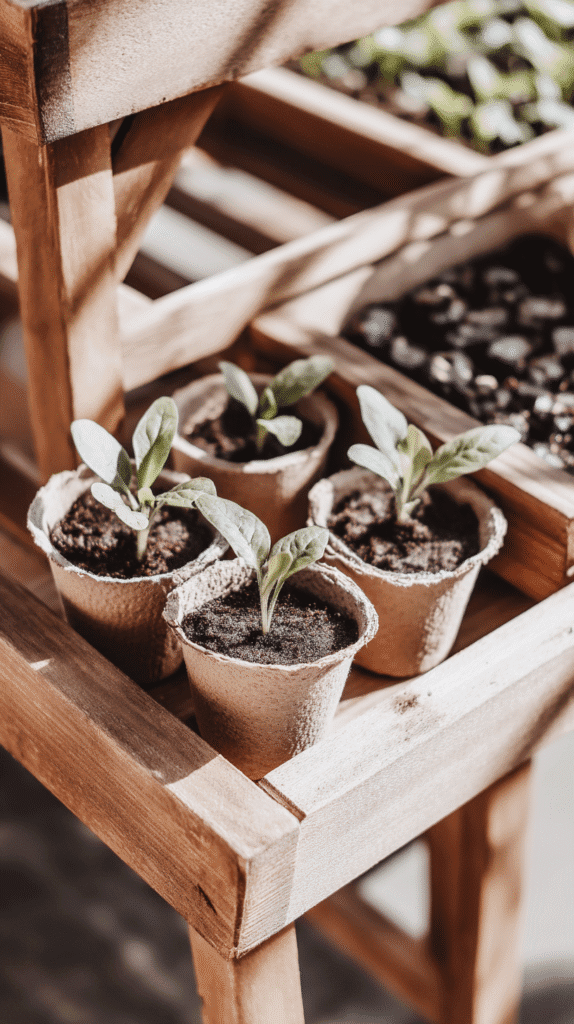
When I first started out, I stubbornly planted vegetables purely based on what I loved to eat, regardless of whether they suited my climate. My early crops struggled, leaving me frustrated and discouraged.
I quickly realized success comes from choosing varieties adapted to your exact environment. Resources like the Farmer’s Almanac Planting Calendar helped tremendously. I’ve also become an avid watcher of local-focused YouTubers like Epic Gardening and Spicy Moustache, and I regularly browse plant databases such as Permapeople.
Switching to crops like Everglades tomatoes, which thrive in hot, humid zones, or rhubarb and ramps for shady spots, turned my gardening fortunes around almost overnight.
Lesson 3: Start Small and Scale Gradually

Initially, I wanted it all: composting, bees, chickens, and extensive veggie beds. Predictably, I became overwhelmed almost instantly. Trying to manage everything at once left me burnt out and discouraged.
I now advocate passionately for starting small. Begin simply, perhaps with container gardening easy vegetables and herbs, or set up a worm compost bin (vermiculture) instead of jumping straight into full-scale composting.
I now commit myself to one new experiment per season, allowing me to grow sustainably without burnout. Tools like simple journals or apps such as Flockstar (perfect for managing livestock records) can help you track your progress.
Lesson 4: Engage with Local Gardening Communities
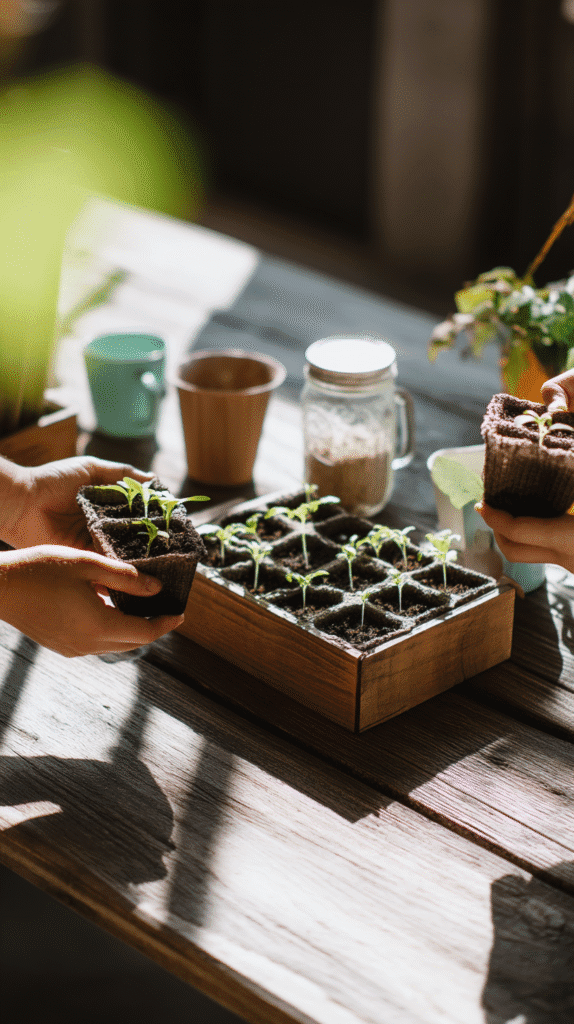
In the beginning, I devoured gardening books and articles online, only to realize general advice often missed the mark for my specific microclimate. When my efforts repeatedly fell short, I felt isolated and frustrated.
Joining my county extension service and attending master gardener workshops completely shifted my experience.
Local plant swaps, farmer’s markets, and community gardens offer incredible local insights, and often free seedlings and soil testing. As a community member wisely noted, befriending local “plant nerds” is invaluable.
They generously share wisdom, seeds, and practical hacks you won’t find in generic gardening advice.
You can also check out online communities for helpful info like reddit’s r/UrbanHomestead.
Lesson 5: Manage Pests Without Chemicals
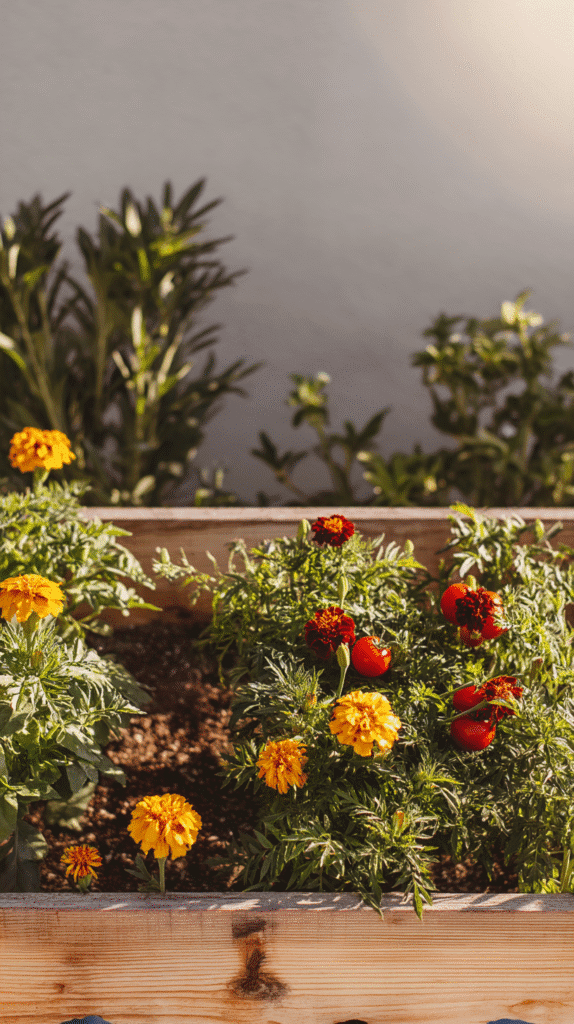
When pests first invaded my garden, my instinct was frustration and despair.
I resisted chemical sprays but struggled to find effective alternatives. Eventually, I discovered that a combination of companion planting (like marigolds near tomatoes or basil beside peppers), daily observation, and manually removing pests (yes, handpicking them into soapy water!) worked wonders.
Now, I proactively attract beneficial insects like ladybugs, lacewings, and pollinators with calendula, alyssum, and yarrow.
On occasion, I’ll use targeted treatments like neem oil, diatomaceous earth, or horticultural soap, but overall, daily vigilance has become a surprisingly enjoyable meditative practice rather than a chore.
Lesson 6: Design for Small Spaces
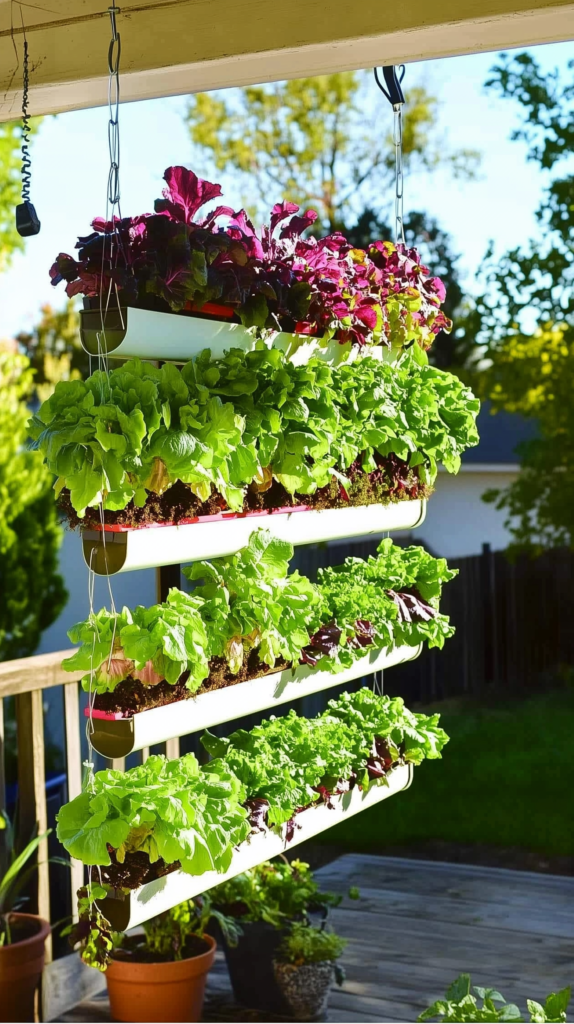
When all I had was a 200-square-foot patio, I initially felt limited.
But with thoughtful planning, even tiny spaces can become incredibly productive. I’ve learned to focus on high-value, high-flavor crops like fresh herbs, salad greens, spring onions, and cherry tomatoes.
Vertical systems like wall planters, shelves, hanging baskets, and grow towers made my tiny patio feel spacious and vibrant.
Instead of chickens, which can be noisy and need more space, I opted for quail. These compact birds are quieter, incredibly productive, and perfect for small stackable cages.
For composting, odor-free solutions like bokashi bins or worm bins handle kitchen scraps effectively indoors or on balconies.
Lesson 7: Navigate HOA Rules and Community Expectations
Urban homesteading in neighborhoods governed by HOA rules or strict community standards can feel daunting. Early on, I was frustrated by rules that restricted visible compost bins, livestock, and non-traditional landscaping.
Reading the HOA rules carefully and learning to frame my projects positively (using terms like “pollinator garden” or “educational edible landscape”) was crucial. Portable, discreet solutions like foldable fencing, decorative planters, and hidden compost bins helped immensely.
Vertical gardening and rooftop gardens can also work around ground-level restrictions beautifully.
When chickens and bees aren’t allowed, native bee habitats provide pollination and ecological benefits without triggering any red flags.
Lesson 8: Leverage Tools & Tech
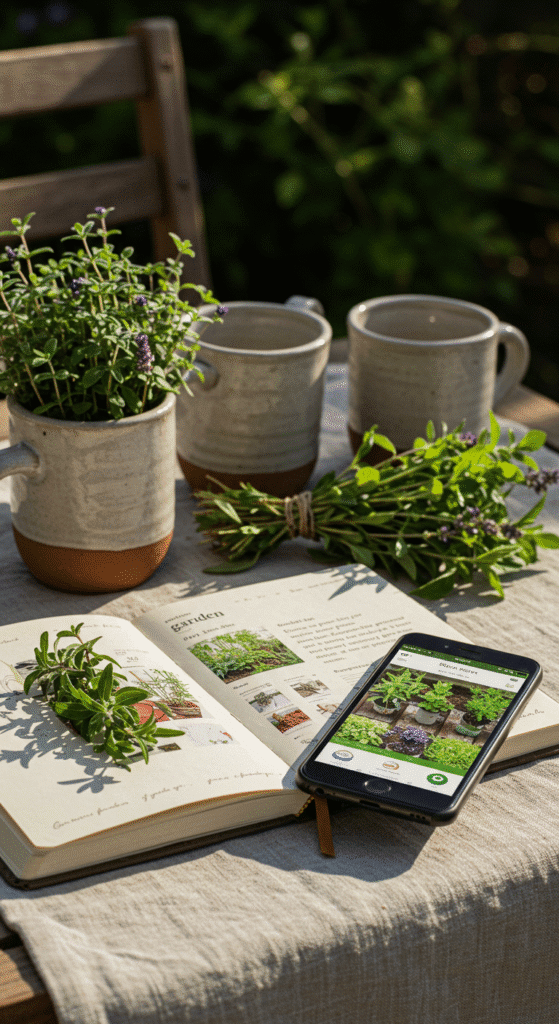
Early on, keeping track of planting dates, harvests, pest issues, and seasonal notes felt nearly impossible manually. My solution? Embrace tech tools and apps that simplify the process.
Apps like Flockstar for egg and livestock tracking, Planter for visual garden layout, and From Seed to Spoon for tailored growing timelines have been game-changers.
Maintaining a seasonal garden journal also became invaluable for recording weather patterns, yields, pest outbreaks, and lessons learned.
Closing Thoughts: Why These Hard Lessons Were Worth It
Reflecting on my urban homesteading journey, every challenge taught me invaluable lessons not only about gardening but about patience, resilience, and flexibility. Mistakes are inevitable, and even necessary, steps toward meaningful growth.
If you’re feeling overwhelmed or discouraged, please remember: every homesteader has felt that way at some point.
You are not alone. Embrace the imperfections, learn from each experience, and cherish every small victory.
Urban homesteading is not just about cultivating gardens; it’s about cultivating ourselves. Continuing to grow wiser, stronger, and more connected to the rhythms of nature and community around us.

